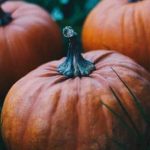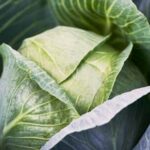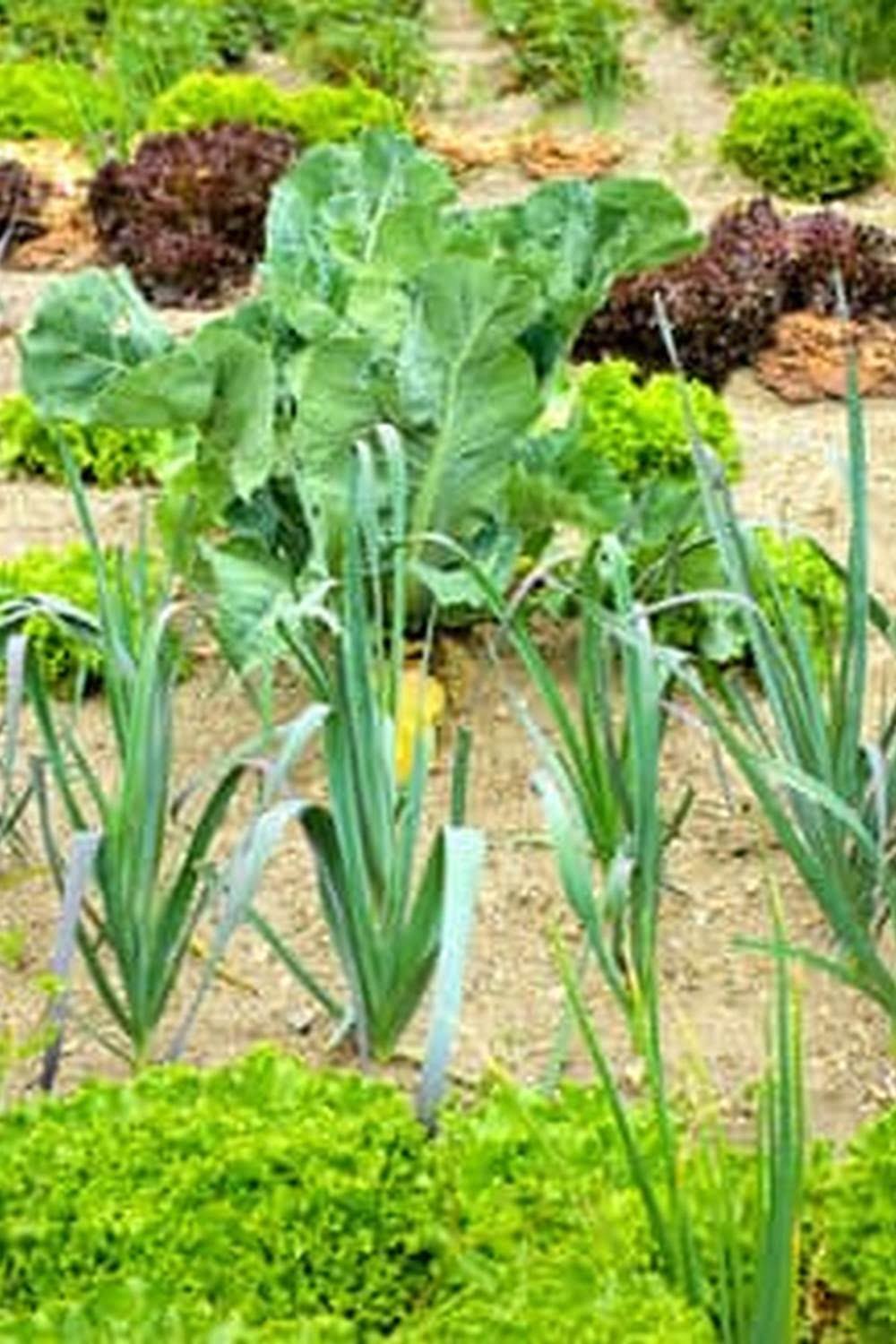Are you looking to start a vegetable garden in Western Washington? Look no further. With its unique climate and growing conditions, Western Washington offers some exciting opportunities for vegetable gardening. In this article, we will explore the best vegetables to grow, soil preparation and maintenance, seasonal planting guide, common pests and diseases, tips for success, local resources, must-try vegetable varieties, and harvesting and preserving methods specifically tailored for Western Washington gardeners.
Gardening in Western Washington comes with its own set of challenges and rewards. The mild temperatures, ample rainfall, and rich soil provide an ideal environment for growing a wide variety of vegetables. However, the region’s maritime climate also brings cooler summers and mild winters that can make it tricky to find the right balance in managing your garden.
In the following sections, we will delve into the specific aspects of gardening in Western Washington to help you navigate through the unique conditions of the region. Whether you are a seasoned gardener or just starting out, this comprehensive guide will equip you with the knowledge and strategies needed to successfully grow a bountiful vegetable garden in Western Washington.
Best Vegetables to Grow in the Western Washington Climate
When it comes to gardening vegetables in Western Washington, selecting the right varieties is crucial for success. The maritime climate of the region brings mild, wet winters and dry summers, making it ideal for certain types of vegetables.
Some of the best vegetables to grow in the Western Washington climate include leafy greens like kale, lettuce, and spinach, as well as root vegetables such as carrots, beets, and radishes. These crops thrive in the cool and moist conditions characteristic of the area.
Additionally, tomatoes, peppers, and cucumbers also do well in Western Washington, especially during the warmer months. However, it is important to choose early-maturing varieties to ensure a successful harvest before the cooler temperatures return. Other suitable vegetable options for this climate are peas, beans, and brassicas like broccoli and cauliflower. These plants can withstand the region’s moderate temperatures and thrive in its fertile soil.
It’s important to note that while some vegetables may require additional protection or specific care due to the unique climate of Western Washington, with proper attention and maintenance they can still yield bountiful harvests. By selecting vegetable varieties that are well-suited for this region’s conditions, gardeners can enjoy a successful growing season despite its challenges.
Soil Preparation and Maintenance for Vegetable Gardening
When it comes to successful vegetable gardening in Western Washington, proper soil preparation and maintenance are key factors in ensuring a bountiful harvest. The unique climate of the region, with its mild temperatures, ample rainfall, and acidic soils, requires specific attention to soil health and fertility.
Soil Preparation
Before planting your vegetable garden, it’s essential to prepare the soil to provide the best growing environment for your crops. Start by testing the pH levels of your soil to determine whether it is within the optimal range for vegetable gardening, which is typically between 6.0 and 7.0.
If needed, you can amend the soil with lime to raise the pH or elemental sulfur to lower it. Additionally, adding organic matter such as compost or well-rotted manure can improve soil structure and fertility.
Soil Maintenance
Once your vegetable garden is established, ongoing soil maintenance is necessary to ensure healthy plant growth. Regularly incorporating organic matter into the soil helps maintain fertility and improves its ability to retain moisture-a crucial factor during Western Washington’s dry summer months. Adding mulch around your plants also helps conserve moisture and suppress weeds while providing additional nutrients as it breaks down.
Maintaining Soil Fertility
Vegetable plants in Western Washington can quickly deplete the nutrients in the soil due to their rapid growth and production. It’s essential to replenish these nutrients throughout the growing season by applying organic fertilizers or compost tea. Crop rotation is another effective method for maintaining soil fertility while reducing the risk of disease and pest infestations associated with specific vegetable families.
By paying close attention to soil preparation and maintenance, Western Washington gardeners can create an ideal growing environment for their vegetables, leading to a successful harvest year after year.
With some dedication and strategic planning around managing pests and diseases common in Western Washington gardens, you too can enjoy a thriving harvest.
Seasonal Planting Guide for Western Washington
When it comes to vegetable gardening in Western Washington, timing is everything. The climate in this region is quite unique, with mild winters and relatively dry summers. This makes it essential for gardeners to know the best times to plant their vegetables in order to maximize their growth and yield.
In general, the planting season in Western Washington begins in early spring, usually around March. This is when cool-season crops such as lettuce, spinach, carrots, and peas can be started outdoors. These vegetables are able to tolerate the cooler temperatures that are still present at this time of year.
As the weather continues to warm up, typically by late April or early May, it becomes safe to start planting warm-season vegetables like tomatoes, peppers, cucumbers, and zucchini. These plants thrive in the warmer temperatures and longer days that come with late spring and summer.
Finally, as fall approaches in September, gardeners can begin planting a second round of cool-season crops for harvest later in the year. These include broccoli, kale, radishes, and Brussels sprouts.
Throughout these seasonal changes, it’s important for Western Washington gardeners to pay attention to local weather patterns and make adjustments as necessary. The proximity to the Pacific Ocean can result in sudden temperature shifts or unexpected rainy spells that may require some flexibility in planting schedules.
| Vegetable | Best Time for Planting |
|---|---|
| Lettuce | Early Spring (March) |
| Tomatoes | Late Spring (May) |
| Broccoli | Fall (September) |
Pests and Diseases Common in Western Washington and How to Combat Them
When it comes to gardening in Western Washington, it’s essential to be aware of the common pests and diseases that can affect your vegetable crops. Fortunately, with proper knowledge and preventive measures, you can combat these challenges effectively.
Some common pests that gardeners in Western Washington may encounter include aphids, slugs, snails, and cabbage loopers. These pests can cause significant damage to vegetable plants if left unchecked. To combat them, consider implementing natural methods such as introducing beneficial insects like ladybugs or using organic pest control products. Additionally, creating physical barriers such as copper tape for slugs and snails can help protect your crops.
In addition to pests, certain diseases can also pose a threat to vegetable gardens in Western Washington. Powdery mildew, damping-off disease, and various fungal infections are among the most prevalent issues. To prevent these diseases, ensure good air circulation around your plants by properly spacing them out and avoiding overhead watering. Applying organic fungicides or neem oil can also help control fungal infections.
To further protect your vegetable crops from pests and diseases, consider practicing crop rotation and maintaining healthy soil through proper watering and adequate nutrition. By staying vigilant and taking proactive measures, you can minimize the impact of pests and diseases on your western Washington garden vegetables.
- Implement natural pest control methods
- Create physical barriers for pests
- Ensure good air circulation around plants
- Practice crop rotation
- Maintain healthy soil through proper watering
- Apply organic fungicides or neem oil
Tips for Success in Vegetable Gardening in Western Washington
When it comes to vegetable gardening in Western Washington, there are a few tips and tricks that can help ensure success in this unique climate. One important tip is to choose vegetable varieties that are well-suited for the mild, wet winters and dry summers of the region.
Consider vegetables like kale, broccoli, and Brussels sprouts which thrive in the cool, moist conditions of Western Washington. It’s also important to pay attention to the specific microclimate of your garden space, as factors like sunlight exposure and proximity to bodies of water can greatly impact plant growth.
Another key tip for success in vegetable gardening in Western Washington is to focus on soil health and nutrition. The region’s typically acidic soils may require amendments such as lime to adjust pH levels and enhance the fertility of the soil.
Additionally, adding organic matter like compost or aged manure can help improve soil structure and provide essential nutrients for plant growth. Regular soil testing can also help guide the appropriate use of fertilizers or other soil amendments based on your garden’s specific needs.
Lastly, successful vegetable gardening in Western Washington requires careful pest and disease management techniques. The region’s mild climate provides ideal conditions for a variety of pests and diseases that can affect vegetable crops.
Implementing integrated pest management strategies such as crop rotation, companion planting, and physical barriers can help minimize pest and disease issues without relying heavily on chemical interventions. By staying attentive to these tips for success in vegetable gardening in Western Washington, gardeners can enjoy a bountiful harvest despite the unique challenges of the local climate.
Local Resources for Vegetable Gardeners in Western Washington
When it comes to vegetable gardening in Western Washington, it’s important to take advantage of the local resources available to help you succeed. Whether you’re a beginner or an experienced gardener, there are several organizations and businesses that offer valuable support and guidance.
1. WSU Extension Master Gardeners: The Washington State University (WSU) Extension Master Gardeners program offers workshops, classes, and resources specifically tailored to the unique climate and conditions of Western Washington. They provide expert advice on soil health, plant selection, pest management, and sustainable gardening practices.
2. West Sound Farmers Market Association: This organization not only provides access to fresh, locally-grown produce but also offers educational events and workshops focused on organic gardening methods, seed saving, and sustainable agriculture. Connecting with local farmers can provide valuable insight into which varieties of vegetables thrive in the region’s climate.
3. Seattle Tilth Alliance: Seattle Tilth Alliance is a non-profit organization dedicated to inspiring and educating people to garden organically while creating a sustainable and equitable food system. They offer a variety of gardening classes, workshops, and resources specific to the Pacific Northwest climate.
4. Local Nurseries & Garden Centers: Many nurseries and garden centers in Western Washington cater specifically to the needs of local vegetable gardeners. These businesses often carry plant varieties that are well-suited for the region’s climate and can provide valuable advice on soil amendments, watering practices, and pest management.
By taking advantage of these local resources for vegetable gardeners in Western Washington, you can gain the knowledge and tools needed to overcome the challenges of the region’s unique growing conditions while maximizing your success in producing a bountiful harvest.
10 Must-Try Vegetable Varieties for Western Washington Gardeners
When it comes to vegetable gardening in Western Washington, choosing the right varieties is crucial for a successful harvest. The unique climate and growing conditions of the region require gardeners to select vegetables that can thrive in the cool, wet weather. Here are 10 must-try vegetable varieties for Western Washington gardeners that are well-suited to the local climate.
Artichokes
Artichokes are a great choice for gardeners in Western Washington due to their ability to withstand the region’s mild temperatures and moist environment. They are perennial plants that can produce edible flower buds year after year, making them a sustainable and rewarding addition to any vegetable garden.
Kale
Kale is a cold-hardy leafy green that thrives in the cooler temperatures of Western Washington. It’s an excellent source of nutrients and can be harvested throughout the year, making it a versatile and valuable addition to the garden.
Brussels Sprouts
Brussels sprouts are another cold-tolerant vegetable that performs well in Western Washington’s climate. With proper care and attention, they can produce flavorful mini cabbages that are perfect for fall and winter harvests.
Beets
Beets are well-suited for the cool, damp conditions of Western Washington and can be grown for both their roots and greens. They are relatively low-maintenance and can add vibrant color and earthy flavor to any meal.
Whether you’re an experienced gardener or just starting out, these 10 must-try vegetable varieties offer plenty of options for growing a diverse and bountiful garden in Western Washington. By selecting vegetables that are well-adapted to the local climate, you can set yourself up for gardening success and enjoy a rich harvest throughout the year.
Harvesting and Preserving Vegetables in Western Washington
Harvesting your vegetables at the right time is crucial for enjoying the best flavors and textures. In Western Washington, where the growing season is a bit shorter than in other regions, it’s especially important to pay attention to timing.
Most vegetables should be harvested when they reach peak ripeness, which is typically indicated by their color, size, and firmness. For example, tomatoes should be picked when they are fully red and slightly soft to the touch, while carrots are best harvested when they are bright orange and about an inch in diameter.
Once you’ve harvested your vegetables, it’s important to properly preserve them to enjoy your homegrown produce year-round. Canning, freezing, and drying are all popular methods for preserving vegetables in Western Washington. For example, tomatoes can be canned into homemade marinara sauce or salsa, while beans and peas can be blanched and frozen for later use. Drying herbs like basil and thyme is also a great way to enjoy their flavors during the winter months.
In addition to traditional preservation methods, many gardeners in Western Washington also take advantage of the region’s cool climate by using root cellars or cold storage areas to keep their harvest fresh for longer periods. This is especially useful for storing root crops like potatoes and carrots. By employing a variety of preservation techniques, you can savor the taste of your garden-fresh vegetables throughout the year.
Conclusion
In conclusion, vegetable gardening in Western Washington comes with its unique set of challenges and rewards. The climate, soil conditions, and seasonal changes make it both a challenging and rewarding experience for gardeners. By embracing these challenges, gardeners in this region can enjoy a bountiful harvest of fresh and nutritious vegetables.
The key to success in vegetable gardening in Western Washington lies in choosing the right vegetables for the climate, preparing and maintaining the soil properly, and following a seasonal planting guide. By understanding the pests and diseases common to the region and how to combat them, gardeners can protect their crops and ensure a successful harvest.
Local resources such as cooperative extension services, gardening clubs, and local nurseries can provide valuable support and guidance for vegetable gardeners in Western Washington. With proper care, attention to detail, and a willingness to adapt to the unique conditions of the region, gardeners can enjoy a thriving vegetable garden that provides an abundance of fresh produce throughout the growing season.
Frequently Asked Questions
What Veggies Grow Best in Western Washington?
Veggies that grow best in Western Washington include leafy greens like kale and spinach, root vegetables such as carrots and beets, and brassicas like broccoli and cauliflower. The mild climate and ample rainfall make it ideal for these crops.
When Should I Start a Vegetable Garden in Washington State?
In Washington State, it’s best to start a vegetable garden in late winter or early spring. This allows enough time for the soil to be prepared and for the seeds or seedlings to be planted before the growing season begins.
What Are the Best Plants to Grow in Washington State?
The best plants to grow in Washington State include berries like strawberries and blueberries, as well as tree fruits such as apples, pears, and cherries. Additionally, herbs like rosemary, thyme, and lavender thrive in the state’s climate.

If you’re looking to get into vegetable gardening, or are just looking for some tips on how to make your current garden better, then you’ve come to the right place! My name is Ethel and I have been gardening for years. In this blog, I’m going to share with you some of my best tips on how to create a successful vegetable garden.





